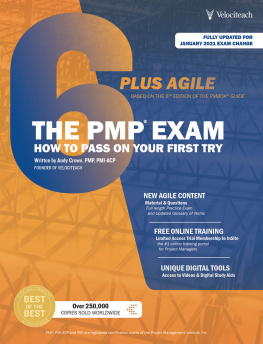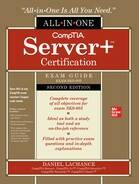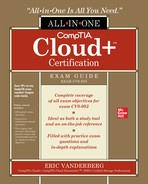Contents
Guide
Page List

ABOUT THE AUTHOR
Indranil Goswami, Ph.D., P.E., is a registered Professional Engineer in Maryland and has been a professor at Morgan State University in Baltimore. He is currently a senior consulting engineer. He is the author of Civil Engineering PE All-in-One Exam Guide and was the recipient of the 2016 Engineering Education Excellence Award from the National Society of Professional Engineers.

Copyright 2018 by McGraw-Hill Education. All rights reserved. Except as permitted under the United States Copyright Act of 1976, no part of this publication may be reproduced or distributed in any form or by any means, or stored in a database or retrieval system, without the prior written permission of the publisher.
ISBN: 978-1-26-001135-7
MHID: 1-26-001135-6
The material in this eBook also appears in the print version of this title: ISBN: 978-1-26-001134-0, MHID: 1-26-001134-8.
eBook conversion by codeMantra
Version 1.0
All trademarks are trademarks of their respective owners. Rather than put a trademark symbol after every occurrence of a trademarked name, we use names in an editorial fashion only, and to the benefit of the trademark owner, with no intention of infringement of the trademark. Where such designations appear in this book, they have been printed with initial caps.
McGraw-Hill Education eBooks are available at special quantity discounts to use as premiums and sales promotions or for use in corporate training programs. To contact a representative, please visit the Contact Us page at www.mhprofessional.com.
Information contained in this work has been obtained by McGraw-Hill Education from sources believed to be reliable. However, neither McGraw-Hill Education nor its authors guarantee the accuracy or completeness of any information published herein, and neither McGraw-Hill Education nor its authors shall be responsible for any errors, omissions, or damages arising out of use of this information. This work is published with the understanding that McGraw-Hill Education and its authors are supplying information but are not attempting to render engineering or other professional services. If such services are required, the assistance of an appropriate professional should be sought.
TERMS OF USE
This is a copyrighted work and McGraw-Hill Education and its licensors reserve all rights in and to the work. Use of this work is subject to these terms. Except as permitted under the Copyright Act of 1976 and the right to store and retrieve one copy of the work, you may not decompile, disassemble, reverse engineer, reproduce, modify, create derivative works based upon, transmit, distribute, disseminate, sell, publish or sublicense the work or any part of it without McGraw-Hill Educations prior consent. You may use the work for your own noncommercial and personal use; any other use of the work is strictly prohibited. Your right to use the work may be terminated if you fail to comply with these terms.
THE WORK IS PROVIDED AS IS. McGRAW-HILL EDUCATION AND ITS LICENSORS MAKE NO GUARANTEES OR WARRANTIES AS TO THE ACCURACY, ADEQUACY OR COMPLETENESS OF OR RESULTS TO BE OBTAINED FROM USING THE WORK, INCLUDING ANY INFORMATION THAT CAN BE ACCESSED THROUGH THE WORK VIA HYPERLINK OR OTHERWISE, AND EXPRESSLY DISCLAIM ANY WARRANTY, EXPRESS OR IMPLIED, INCLUDING BUT NOT LIMITED TO IMPLIED WARRANTIES OF MERCHANTABILITY OR FITNESS FOR A PARTICULAR PURPOSE. McGraw-Hill Education and its licensors do not warrant or guarantee that the functions contained in the work will meet your requirements or that its operation will be uninterrupted or error free. Neither McGraw-Hill Education nor its licensors shall be liable to you or anyone else for any inaccuracy, error or omission, regardless of cause, in the work or for any damages resulting therefrom. McGraw-Hill Education has no responsibility for the content of any information accessed through the work. Under no circumstances shall McGraw-Hill Education and/or its licensors be liable for any indirect, incidental, special, punitive, consequential or similar damages that result from the use of or inability to use the work, even if any of them has been advised of the possibility of such damages. This limitation of liability shall apply to any claim or cause whatsoever whether such claim or cause arises in contract, tort or otherwise.
This book is dedicated to the memory of my mother and my uncle Kakamoni, both of whom were a source of endless support and inspiration for me but could not see it published.
CONTENTS
PREFACE
This book was written to assist the student preparing for the Fundamentals of Engineering (FE) Civil examination. It consists of condensed review material and approximately 440 solved examples of difficulty level appropriate for this exam. As of January 2014, the FE Civil exam has consisted of approximately 110 questions in the following subject areas:
Mathematics | 711 problems |
Probability and Statistics | 46 problems |
Computational Tools | 46 problems |
Ethics and Professional Practice | 46 problems |
Engineering Economics | 46 problems |
Statics | 711 problems |
Dynamics | 46 problems |
Mechanics of Materials | 711 problems |
Materials | 46 problems |
Fluid Mechanics | 46 problems |
Hydraulics and Hydrologic Systems | 812 problems |
Structural Analysis | 69 problems |
Structural Design | 69 problems |
Geotechnical Engineering | 914 problems |
Transportation | 812 problems |
Environmental Engineering | 69 problems |
Construction | 46 problems |
Surveying | 46 problems |
In this book, the content is organized in the same order as the official (NCEES) syllabus. Whenever appropriate, solutions include specific suggestions and relevant strategic advice.
When attempting the practice problems, students are advised to use a digital (PDF) copy of the FE Reference Handbook (currently in version 9.4), so they can get accustomed to navigating it in electronic form, rather than as a paper document. Make sure that you use the most current version because there have been significant changes in organization and content from the eighth to the ninth edition.
On the actual exam, the examinee will have 5 hours and 20 minutes to answer 110 questions. That is an average pace of about 3 minutes per problem. The first 55 questions will represent the first half of the exam (covered in and, after the break, will have more than 4 hours available to answer the remaining 55 questions. Another examinee may do exactly the opposite.
In these practice problems, I have tried to keep the difficulty level reasonable. Some are easier than others. However, some of the questions, in spite of being more difficult than the 3-minute variety, have been included because they reinforce a critical area of learning. On the actual test, there will invariably be a mix of questions of various difficulty levels, and a well-prepared examinee will be able to recognize quickly whether a particular problem is easy enough to attempt right away or one that should be put aside and come back to later. This is a very important strategy for an exam as fast-paced and as diverse as the FE Civil exam.







